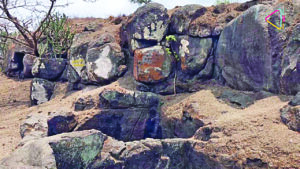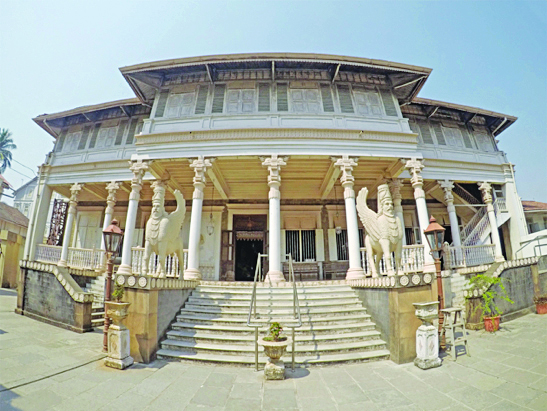 For Parsi Zoroastrians across India and even globally, the quiet and quaint village of Udwada is what Mecca is to the Muslims or the Vatican to the Christians. But, was Udwada always this quiet? Was the Holy Atash Bahram Fire, that was first consecrated at Sanjan and today housed in a grand heritage building at Udwada, always known as Iranshah? Today we bring to light some relatively unknown facts about Iranshah!
For Parsi Zoroastrians across India and even globally, the quiet and quaint village of Udwada is what Mecca is to the Muslims or the Vatican to the Christians. But, was Udwada always this quiet? Was the Holy Atash Bahram Fire, that was first consecrated at Sanjan and today housed in a grand heritage building at Udwada, always known as Iranshah? Today we bring to light some relatively unknown facts about Iranshah!
We all know that the very first Atash Bahram to be consecrated on Indian soil was in Sanjan, which we know today as Iranshah. We also know, that when Sanjan was attacked by the army of Sultan Mahammad (also known as Mohammad Begda), led by Alafkhan,the Sanjana priests fled Sanjan with the Holy Fire to the Bahrot hills. The Holy Fire was ritually enthroned in a cave and tended by Sanjana priests, with all ritual purity under very harsh and rugged circumstances for twelve years.
Faresta And Navjote Ceremony At Bahrot:
Although Iranshah remained enthroned in a cave at Bahrot for only twelve years, Parsis to this date consider Bahrot as ‘sacred space’. The Holy Fire has been physically moved from the cave centuries ago, but the energy of the rituals and countless Avesta prayers chanted in the cave remain, and the story we are about to narrate bears testimony.
Centuries after the Holy fire was shifted from Bahrot, one Sohrabji Palsetia, the chief of Saronda (a village situated between Sanjan and Nargol) pledged that if his wish to have a son is fulfilled, he would perform Faresta (a thanks-giving ceremony) and perform his son’s Navjote in the Bahrot hills. His wish came true and keeping his word, Sohrabji later performed the Faresta ceremony and his son’s Navjote in the rugged Bahrot hills. The ceremony was performed by Er. Pestonji Panthaky, the then Panthaky of the Agiyari in Nargol and Er. Nassarwanji Panthaky (farther of Rustomji Panthaky – the Principal of the Dadar Athornan Madressa and predecessor of Er. Dr. Ramiyar Karanjia – the current Principal.
All Atash Bahram were once called Iranshah:
After the fall of the Sasanian Empire, Zoroastrians started referring to all Atash Bahram in Iran as Iranshah. Learned writers like Zardusht Bahram Pazdu (the thirteenth century author of the Persian Arda-Viraf Nameh) and Bahman Punjia (of the seventeenth century Persian Rivayat fame) refer to the Atash Bahram of Kerman, by the name Iranshah as also Shahansha (Emperor or King of Kings) and Bahram Firuzsha (victorious king) implying thereby the spiritual role of the Holy Fire in the Governance of the country (Iran) after sovereignty of Iran was lost to the Arabs.
In the Quissa-e-Sanjan (written in 1599 AC), the author Bahman Kaikobad refers to the first Atash Bahram consecrated at Sanjan, as Iranshah and Shahhensha. However, gleaning through historical records it appears that India’s first Atash Bahram started being called Iranshah only from the beginning of the twentieth century.
Documents of the seventeenth and eighteenth century written by Sanjana priests refer to the Sanjan fire simply as Atash Bahram or Atash-ni Agiary distinguishing thus the Sanjan fire from the Vadi Dar-e-Meher, which had no permanently burning fire until 1795 AC.
In their letter addressed to Maneckji Naoroji Sett (1746 AD), the Sanjana priests refer to the Holy fire simply as Atash Bahram or Shriji (great) but not as Iranshah. Even the first volume of Parsee Prakash (published 1888 AC by B B Patel), the Sanjan Atash Bahram is not referred to as Iranshah, not even in the footnote.
A Village Of Priests
In the eight hundred paged Gujarati volume titled, ‘The History of Holy Iranshah’, Shapurji Kawasji Hodiwala notes that in 1927, there were one thousand three hundred and fifty-three Athornan (priests), inhabiting two hundred and thirty houses in Udwada; and the Behdin (laity) numbered only one hundred and one, living in forty houses.
Gathu Bharvani Ceremony:
Few know of a tradition followed by the Sanjana priests who serve the Holy Fire at Udwada, called gathu bharvani kriya. The ritual involves placing a large log of dry and solidly knotted Bawal (Babool) wood under the layers of ash on the Sarposh of the Afarganyu. This ritual is performed to safeguard the Holy Fire – a sort of backup strategy to ensure that if the Sacred Fire is extinguished either accidentally or by enemies of the religion, the hidden fire ablaze beneath the layers of ash can be brought out for worship and the Silsila (continuity) of the Holy Fire consecrated more than a millennia ago at Sanjan, can be maintained.
This ritual was probably initiated during troubled times, possibly after Sanjan was sacked by invaders and there was threat that the invading army may desecrate or extinguish the Holy Fire.
- The Poison of Pessimism - 27 April2024
- Celebrating The Interplay Of Life And Fire! - 20 April2024
- Customs To Observe At Atash Behram Or Agyari - 13 April2024
